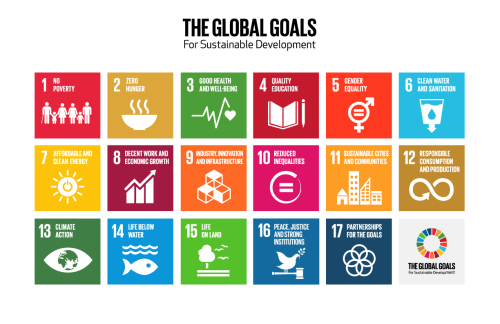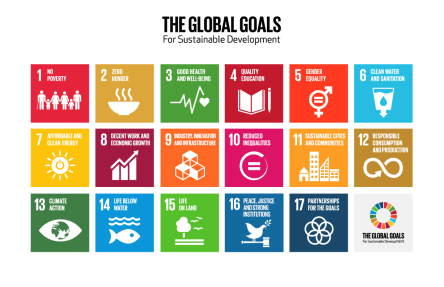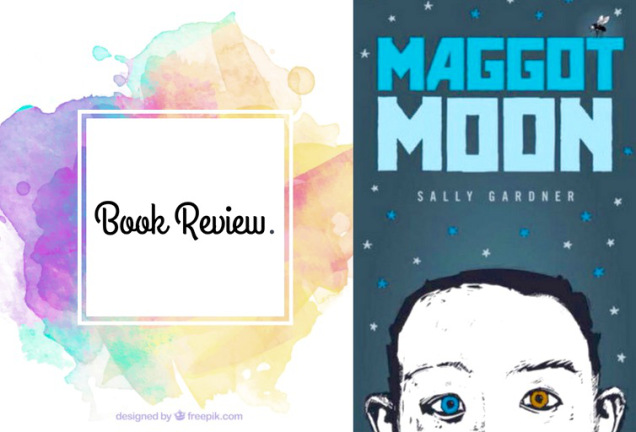
Here is my ignigte speech on Sustainable Development Goals. It was the first time I’d ever done an Ignite presentation (20 slides, 15 seconds per slide, 5 minutes total). We were supposed to pick something we were passionate about, so I picked Sustainable Development Goals. I hadn’t known about them before last year, and I thought there might be other people like me who hadn’t heard of them either. I thought it might be a good way to at least introduce them to some educators.
I did misquote a couple of statistics–I was a little nervous! Here’s are a few excerpts with the correct statistics and some links to more information.
On 25 September 2015, the 193 countries of the UN General Assembly adopted the 2030 Development Agenda titled “Transforming our world: the 2030 Agenda for Sustainable Development” otherwise known as the SDGs – Sustainable Development Goals. There are 17 of these goals that have specific targets to be achieved over the next 15 years (by 2030).

The goals that came before the SDGS are called the MDGs (Millennium Development Goals. These goals were also created by world leaders at the United Nations Headquarters. They committed their nations to a new global partnership to reduce extreme poverty – with a deadline of 2015 – that have become known as the Millennium Development Goals.
The first goal, eradicate extreme poverty and hunger, was to halve the proportion of people living in poverty by 2015. The MDGS use a 1990 statistic as their baseline that said that 36% of people in the world live in extreme poverty. Their goal was to reduce that proportion to 18%.
Did that happen? No.
Actually, by 2015, the proportion of people living in abject poverty was reduced to 12%, so we exceeded that goal! Progress was made in other areas too!
- Enrollment in primary education in developing regions has reached 91% (up from 83%).
- The mortality rate of children under five has been cut by more than half since 1990.
- Between 2000 and 2013 new HIV infections fell by 40% and 37 million tuberculosis deaths have been averted.
- 2.6 Billion People have gained access to improved drinking water since 1990.
We still have a long way to go, but it actually may be possible, if we all work together, to end poverty for good! The world CAN get better!
After learning about what the SDGs were, I began researching how to help. I wanted to know how can citizens and teachers and principals and ITRTS and tech leaders and STUDENTS help with these lofty Goals? I think there’s three main ways.
First, check out the SDGs and learn more!
There are tons of resources out there, from apps, to websites, even online courses.
- Teach SDGs
- The World’s Largest Lesson Webiste
- SDGs in Action App
- Free Online Course on Teaching the SDGs
Second, incorporate the SDGs into your classroom – find lessons or projects to join!
Not only are their resources for you to learn more, but there are resources already available for you to use with your students. We talk about 5 C’s and PBLS, and global goals are the perfect way to be able to incorporate those concepts.
Share the global goals with your students, find a lesson, and empower them to make a difference in their world! And if you are in a position where you work with teachers, help them find these resources and support them as they use them! There are all sorts of projects that students can join, or you can make your own!
- My name my identify.
- What’s on my plate?
- Voices for the Global Goals
- From Where I Stand
- The Human Differences Project
Third, it’s been said that Knowledge is Power. Spread the word! Be an advocate!
As educational technology leaders, we hopefully have the ability and platform to spread the word! Participate in Global Ed Twitter chats, use the hashtag #teachSDGS and #GlobalEd really use the power of social media to get the word out!
Share this:


![Balm_SleepTime_Tasneem_Naturel[1]](/ai/024/792/24792.jpg)


